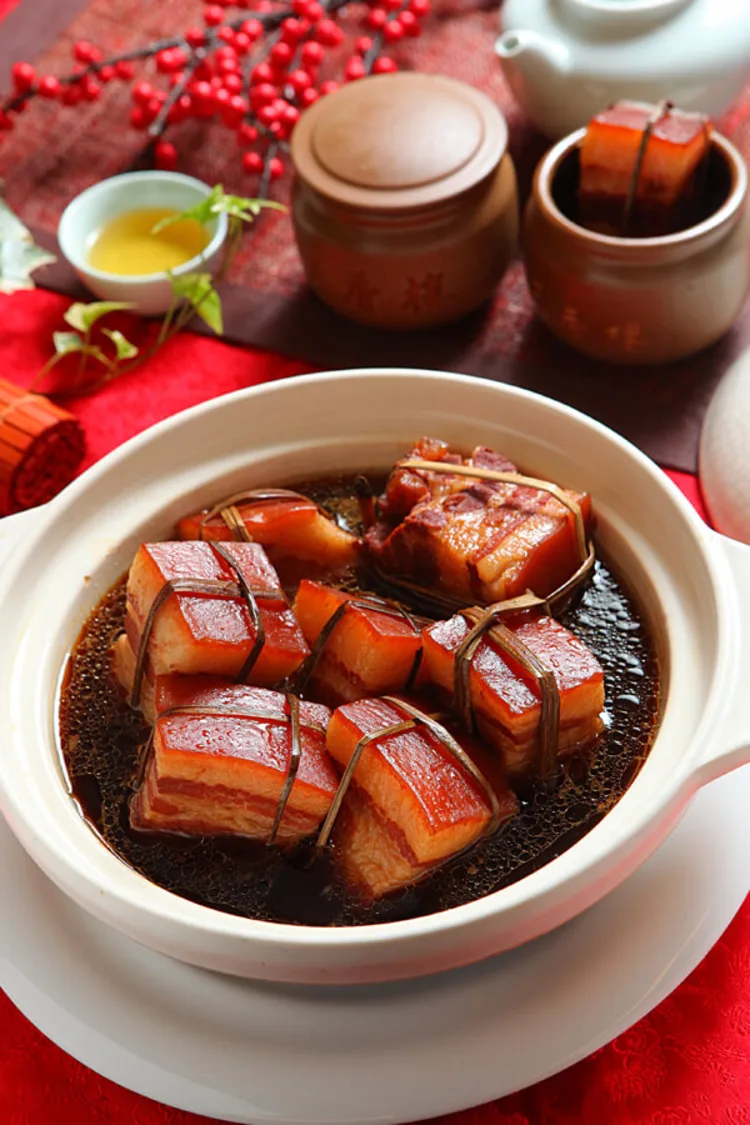
Dongpo pork (东坡肉)
Braised pork belly named after Su Dongpo, featuring melt-in-your-mouth meat and a glossy red-brown sauce.
Ingredients
- •Pork belly
- •Soy sauce
- •Shaoxing wine
- •Rock sugar
- •Ginger
Instructions
Cut pork
Cut pork belly into squares
Blanch
Briefly cook in boiling water
Braise
Slow cook in sauce until tender
Dongpo pork (东坡肉) is a beloved Chinese dish known for its rich, melt-in-your-mouth pork belly, braised to perfection in a glossy red-brown sauce. This dish is named after the famous poet and statesman Su Dongpo, who is said to have created it during the Song Dynasty.
The history of Dongpo pork is steeped in tradition, with tales of its origin linked to Su Dongpo himself, who was known for his culinary skills. It is said that he prepared this dish for his friends, and it quickly became a favorite among the locals, symbolizing the harmony of flavors and textures.
To make Dongpo pork, start by cutting the pork belly into squares and blanching it briefly in boiling water to remove impurities. Then, braise the pork in a mixture of soy sauce, Shaoxing wine, rock sugar, and ginger, allowing it to simmer slowly until the meat is tender and infused with the rich flavors of the sauce.
For those looking to customize this dish, consider adding additional spices or aromatics, such as star anise or garlic, to enhance the flavor profile. You can also experiment with different cooking methods, like using a pressure cooker, to save time while still achieving tender results.
In China, Dongpo pork is often served as a main dish during family gatherings or special occasions, typically accompanied by a bowl of steamed rice and a selection of vegetables. The combination of the savory pork and the fragrant rice makes for a satisfying meal that brings people together.
While this dish is undeniably delicious, it's important to be mindful of its richness. The pork belly and sauce can be high in calories and fat, so it's best enjoyed in moderation. For food lovers, however, Dongpo pork is a must-try experience that captures the essence of traditional Chinese home cooking.
